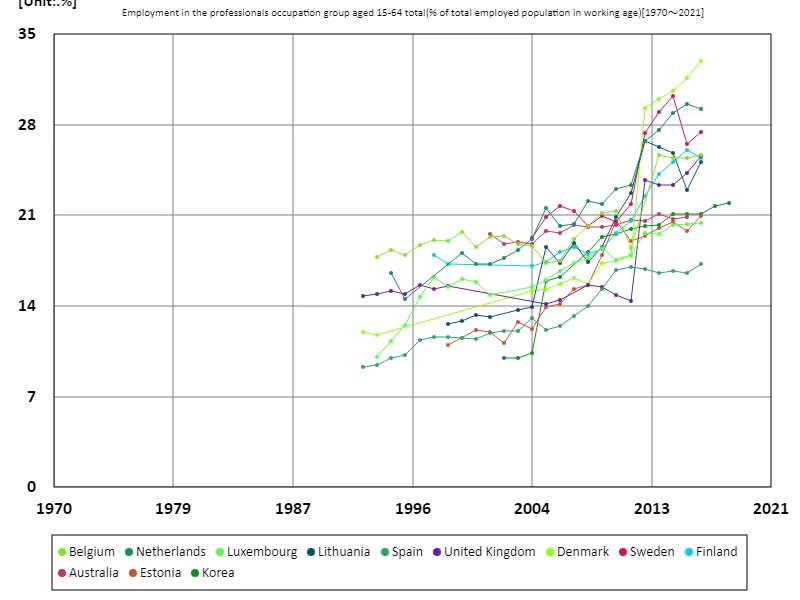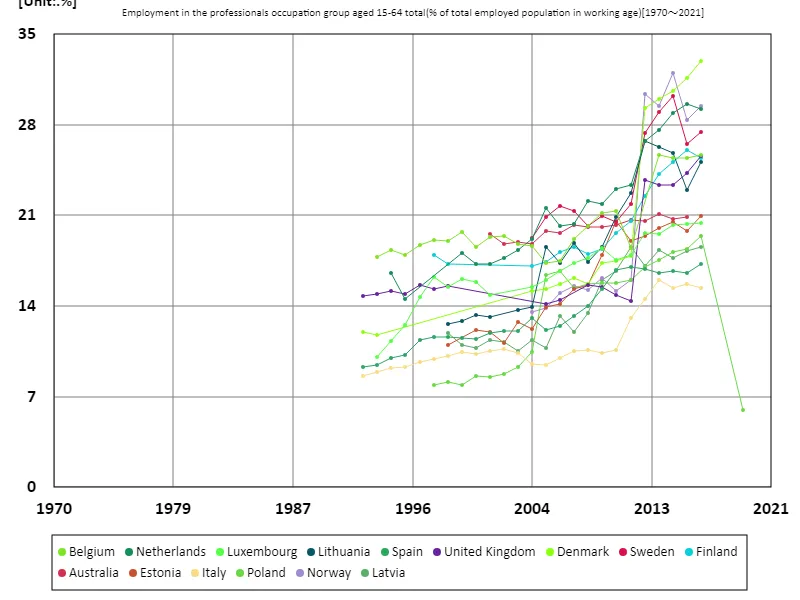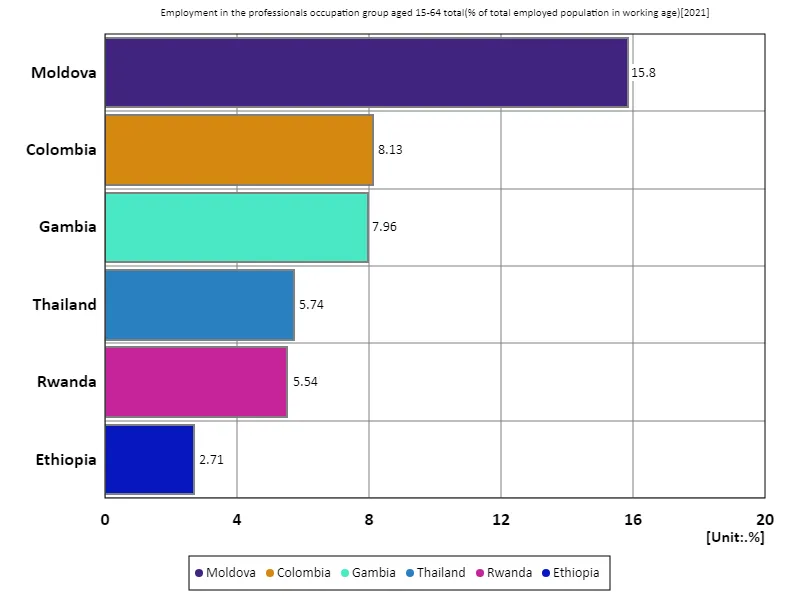- Abstract
- Employment rate for all 15-64 year olds, professional sector (percentage of working age employed population)
- Employment rate for all 15-64 year olds, professional sector (percentage of working age employed population) (worldwide)
- Employment rate for all 15-64 year olds, professional sector (percentage of working age employed) (worldwide, latest year)
- Reference
Abstract
Rapid economic growth and technological innovation are behind South Korea’s professional sector employment rate reaching 21.9% in 2018. Over the past few decades, South Korea has experienced significant development in information technology, manufacturing and services, resulting in increased demand for highly skilled jobs. This growth has encouraged rising educational standards and the specialisation of skills, leading to higher employment rates in the professional sector. Meanwhile, although South Korea’s employment rate in the professional sector is high compared to other developed countries, challenges such as overwork and job instability still exist in the country’s labor market. Given these characteristics, South Korea will need to continue to work to improve its working environment while maintaining an increase in the employment rate of professional occupations.
Employment rate for all 15-64 year olds, professional sector (percentage of working age employed population)
Employment in the professional sector in Denmark has shown a significant increase between 1992 and 2018, reaching 32.9% in 2016. This growth is due to Denmark’s high educational standards and labor market flexibility. Denmark, in particular, has placed emphasis on improving skills and has strengthened its education system to meet the demand for skilled jobs. Government labour market policies and welfare systems are also contributing to higher employment rates for professionals. Denmark’s current employment rate of 100% compared to its peak indicates a long-term stable labour market and improved working conditions. Overall, Denmark has been successful in expanding skilled employment and is sustaining its gains.


The maximum is the latest one, 32.9% of Denmark
Employment rate for all 15-64 year olds, professional sector (percentage of working age employed population) (worldwide)
The employment rate in the professional sector for 15-64 year olds in Denmark showed a significant increase between 1992 and 2016, reaching 32.9% in 2016. Denmark’s high rate of skilled employment reflects the success of the country’s education system and labour market policies. Over the years, Denmark has responded to the demand for highly skilled jobs by improving the quality of education and strengthening vocational training. Additionally, labor market flexibility and improved employee benefits have also contributed to higher employment rates for professionals. Furthermore, the Danish labour market is well balanced between the demand and supply of skilled occupations thanks to efficient job matching and a well-supported employment insurance system. As a result, Denmark has maintained a high level of employment in the professional sector, which is currently higher than at its peak. Overall, Denmark’s success story shows that progressive education and labour policies are key factors in boosting professional employment rates.


The maximum is the latest one, 32.9% of Denmark
Employment rate for all 15-64 year olds, professional sector (percentage of working age employed) (worldwide, latest year)
According to 2021 data, Moldova recorded the highest employment rate in the professional sector for people aged 15-64 at 15.8%. This indicates that the country is meeting the demand for skilled jobs at a relatively high rate. As Moldova’s economy continues to grow, the demand for skilled workers is increasing, which is likely due to advances in education and skills development. Meanwhile, the overall average employment rate is 7.65%, indicating that many countries have relatively low employment rates in the professional sector. This average reflects the limited share of professional occupations in the overall job market. Countries with high levels of skilled employment have a strong demand for education systems and specialized skills, while countries with low levels tend to cater to more basic labour market needs. In addition, the overall total of 45.9% shows that although professionals play an important role in the labor market, there are large differences in their proportions between countries. Developed countries tend to have relatively high rates of employment in professional occupations, while emerging and developing countries tend to have lower rates. This difference is due to a variety of factors, including education levels, industrial structure, and economic maturity.


The maximum is 15.8% of Moldova, the average is 7.65%, and the total is 45.9%



Comments